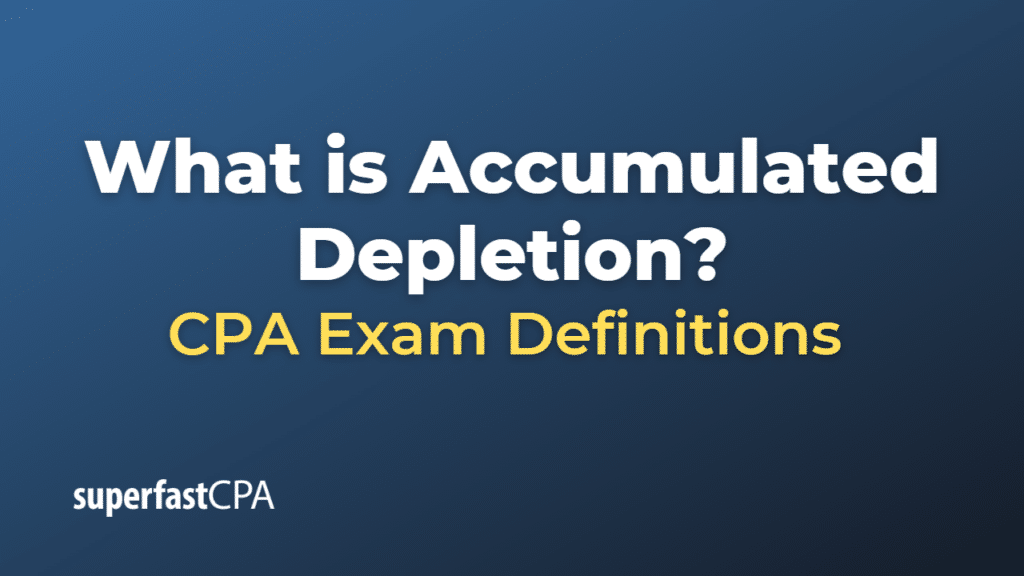Accumulated Depletion
Accumulated depletion is an accounting concept used to allocate the cost of natural resources as they are extracted or consumed over time. It represents the total amount of a natural resource’s original cost that has been used up or depleted through the extraction or consumption process. Accumulated depletion is recorded on a company’s balance sheet as a contra asset account, which reduces the value of the natural resource asset.
In the context of natural resources, such as minerals, timber, or oil and gas, depletion is similar to depreciation for tangible assets and amortization for intangible assets. Accumulated depletion increases over time as more of the resource is extracted, reflecting the reduction in the resource’s value.
To calculate accumulated depletion, you need to determine the depletion rate per unit of the resource and multiply it by the number of units extracted during a specific accounting period.
Example of an Accumulated Depletion
Here’s an example of how to calculate accumulated depletion:
- A company purchases a timberland for $1,000,000, with an estimated 500,000 units of timber available for extraction.
- The depletion rate per unit of timber is calculated as: $1,000,000 / 500,000 units = $2 per unit.
- In the first year, the company extracts 100,000 units of timber.
- The depletion expense for the first year is: 100,000 units * $2 per unit = $200,000.
- The accumulated depletion at the end of the first year is $200,000.
In this example, the accumulated depletion of $200,000 represents the portion of the timberland’s original cost that has been used up during the first year of operation. As the company continues to extract timber, the accumulated depletion will increase, reducing the value of the timberland asset on the balance sheet.













